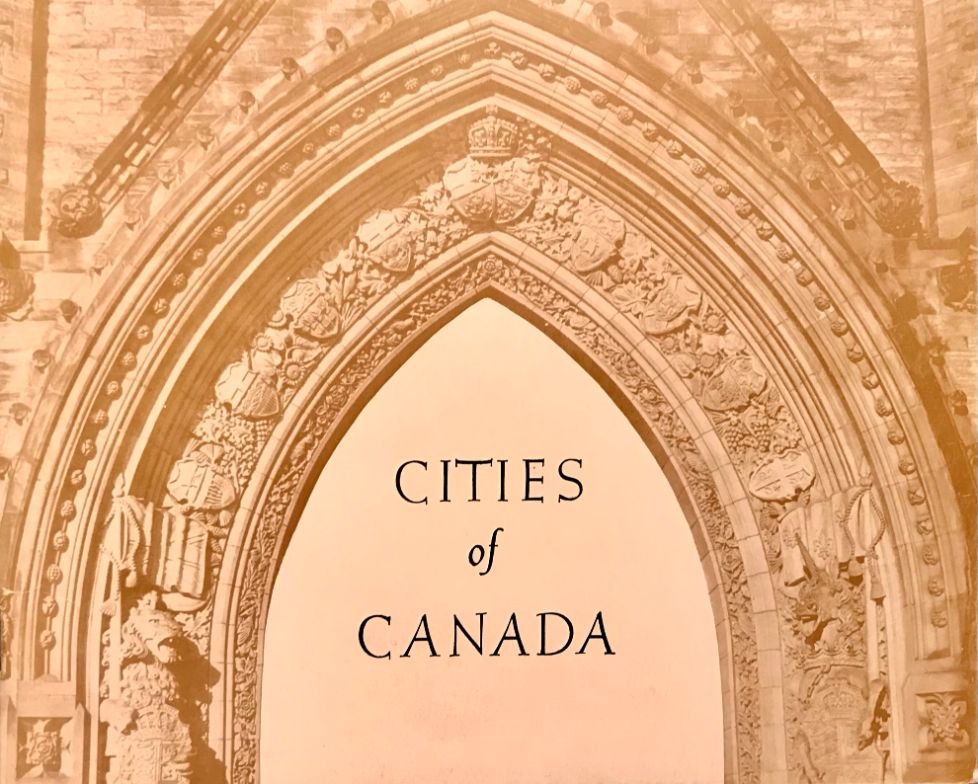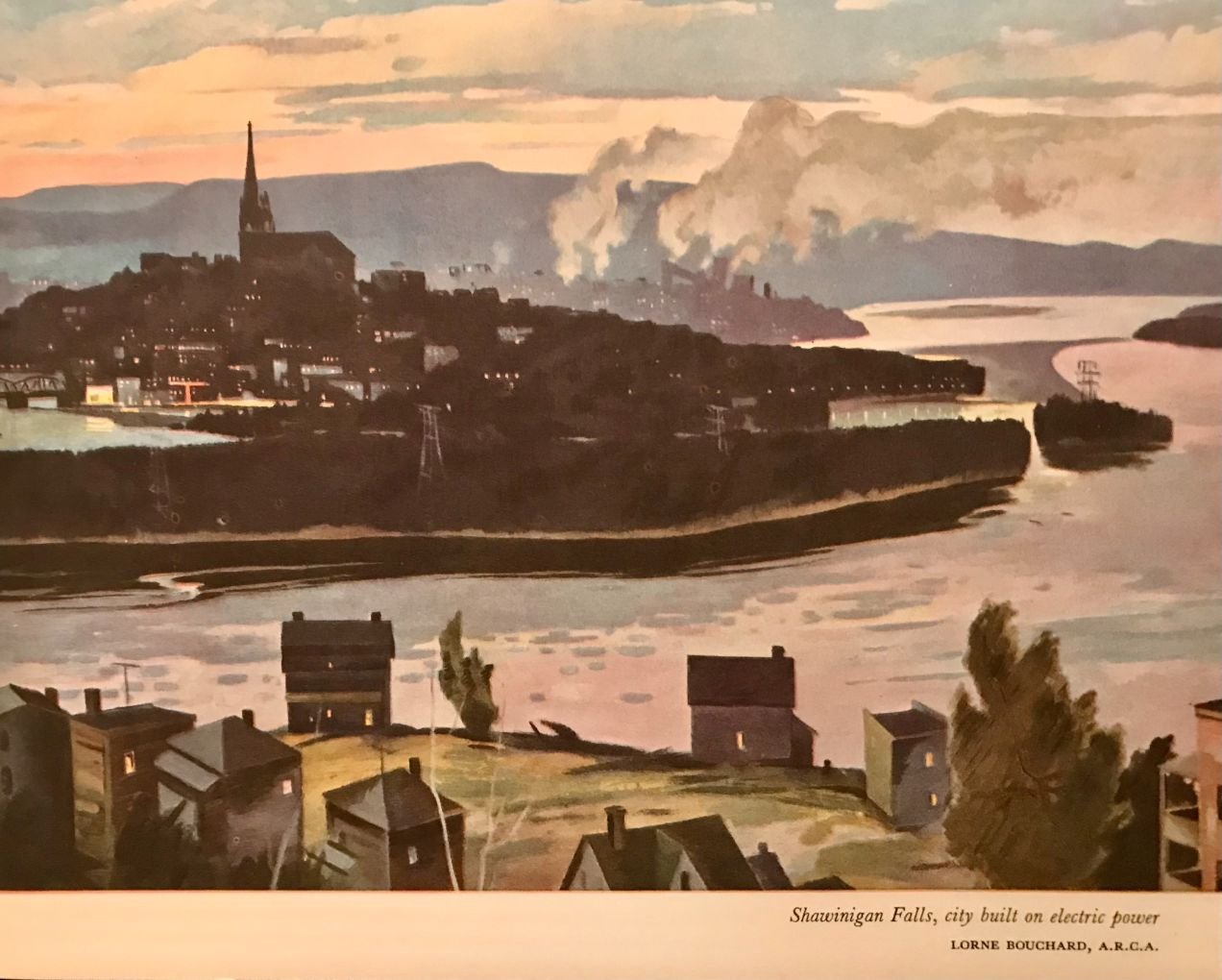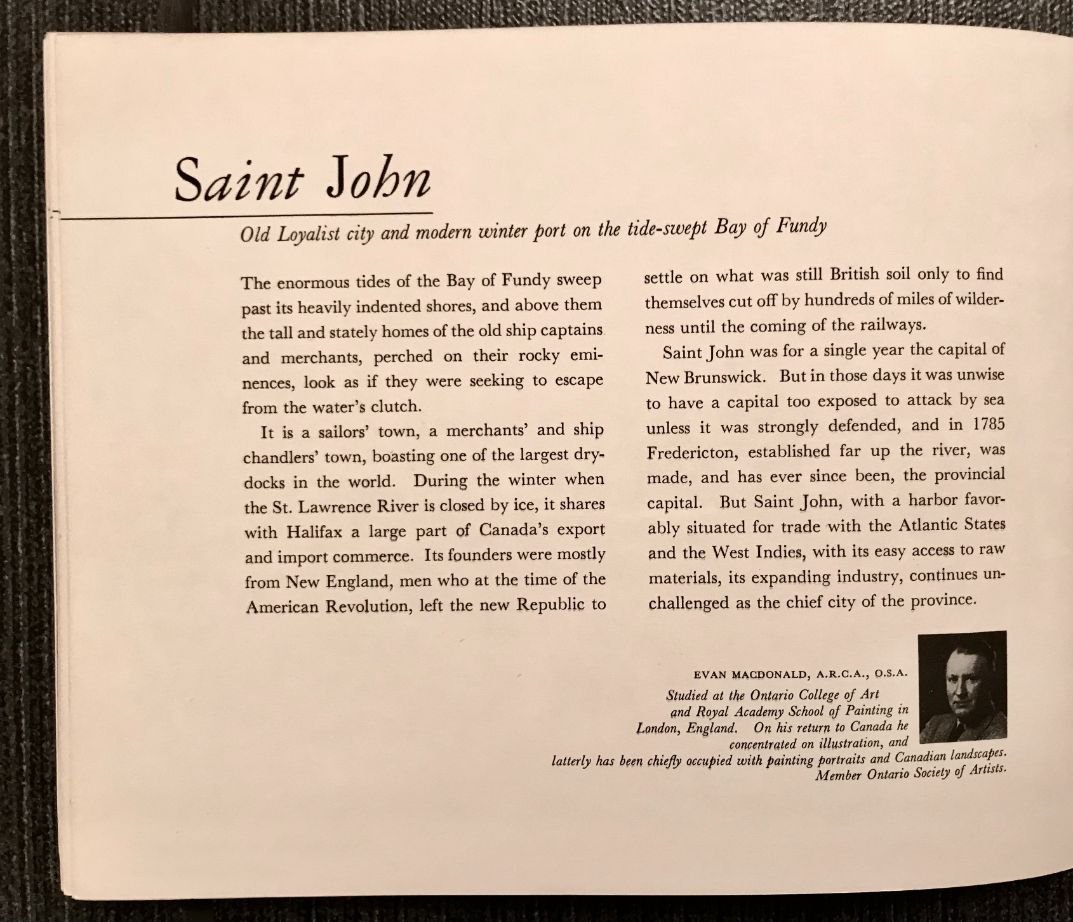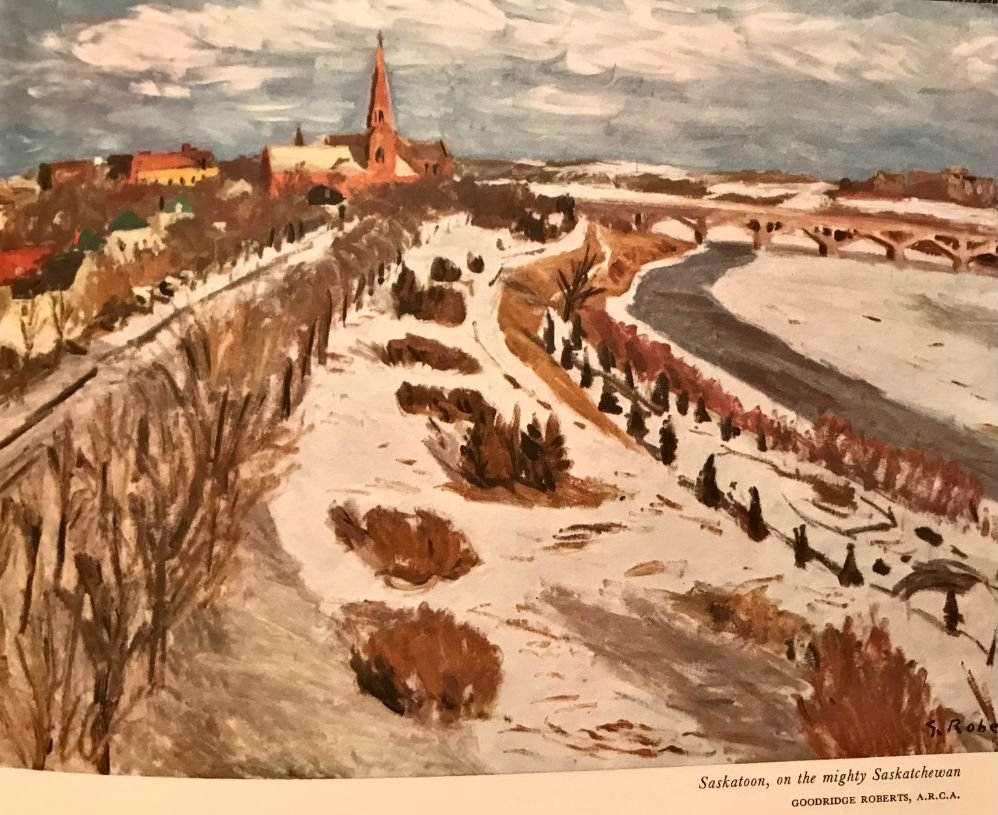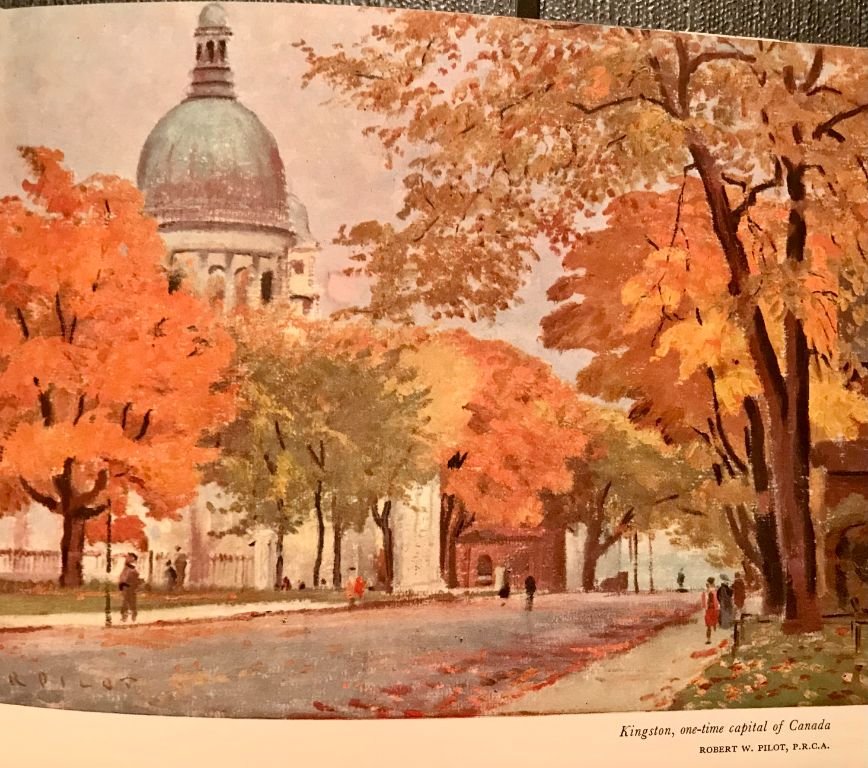Cities of Canada: From the Seagram Collection of Paintings (1951)
Did you know in 1951 The House of Seagram organized an international tour 0f 25 Canadian cities paintings from their corporate collection? I didn’t until I picked up the exhibition catalogue several years ago in a Victoria B.C. thrift store.
Recently while straightening up the studio, I found it, gave it another read, and thought I’d share it with those of you who would love to travel Canada, but are hesitant due to COVID.
The stated goal of the tour was “to bring to the peoples of the world some glimpses of the Canadian landscape and sky-line, in particular some views of Canada’s cities – cities rising from its sea coasts, in the midst of its plains and at the foot of mountains.”
The city portraits were painted by some of Canada’s leading artists – Charles Comfort, Walter Phillips, York Wilson, A.J. Casson, A.C. Leighton, A.Y. Jackson, and Goodridge Roberts, to name a few. Each painting is accompanied by a short essay that attempts to capture the essence of the city.
The epilogue ends with a dubious statement: “There is almost certainly no nation in the world in which the requisites for a comfortable and satisfying life are more widely diffused among the whole of the population.”
The cover of the catalogue is of the archway over the main entrance to Canada’s Parliament Buildings, which features the Coats of Arms of the ten provinces in geographic sequence from the Pacific to Atlantic Ocean.
Excerpts
Calgary is depicted not only as “heart of the cow country, city of the Stampede, neighbour of the foothills,” but also as “a city of substantial fortunes and gracious living. Today it has the solid settled air of a much older city.”
Winnipeg is “a cultural melting-pot of the newer Canada. Transcontinental lines going westward fan out across the bounding prairies and serve a population of two and one half million, where seventy years ago great herds of buffalo roamed. The Bible, they say, is read in more languages in this melting-pot city than anywhere else in the world.
Hamilton is profiled as “the ambitious city with a great steel industry great harbour and great university. It is only 40 miles from Toronto, the capital and chief city of Ontario, and it may have felt that it had to be ambitious if it was not to be overshadowed.”
It is also a walk back in time, when Montreal was larger than Toronto, and Winnipeg, Ottawa, Quebec City, Hamilton, Edmonton and Windsor were all larger than Calgary. And the population of Vancouver was 530,728, which is not that much smaller than the City of Vancouver today - 631,486.
Edmonton is portrayed as the “take-off for the arctic, as the second or third person you meet on Jasper Avenue is probably just in from Aklavik or at least Yellowknife. The people of Alberta are young, virile, audacious and energetic.”
London was intended to be the political capital of Ontario but did not fill up with population rapidly enough and Toronto got ahead of the more westerly city.
“Two branches of the Thames unite in London, and their winding streams with tree-clad banks…make it a delightful residential city.”
Saskatoon is a “twenty century, example of the university city serving an agricultural community. It is an outstanding example of the determination of a newly settled population to make for themselves not only a living, but a truly good life.”
Kingston is described as, “the limestone city, a bulwark of old-world, nineteenth century quiet, gradually being surrounded and engulfed by twentieth-century industry.”
Selected Canadian City Portraits
Last Word
If you like this blog, you will love these links:
Jan Morris: Canada: A Country of Prosaic Cities - Toronto!
